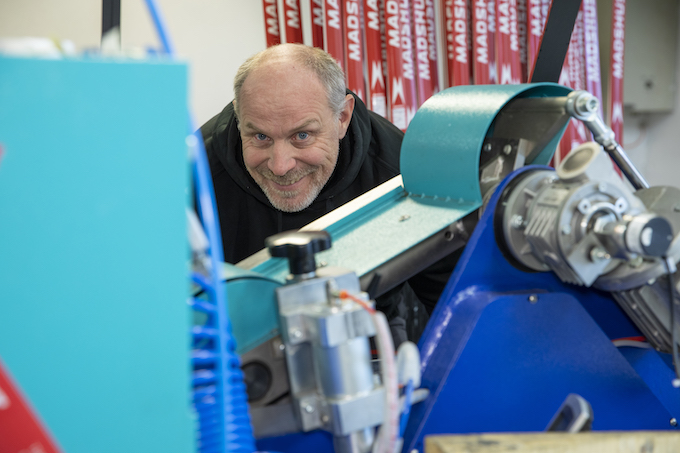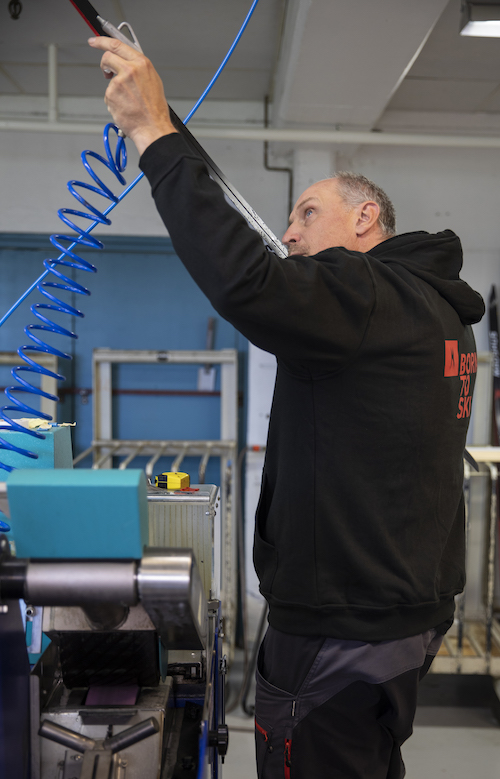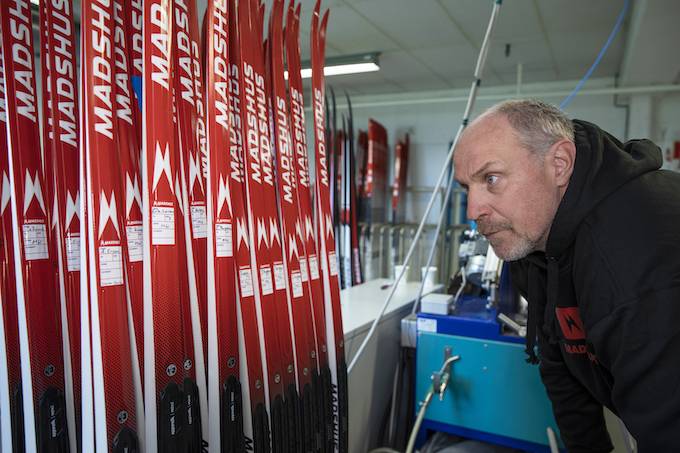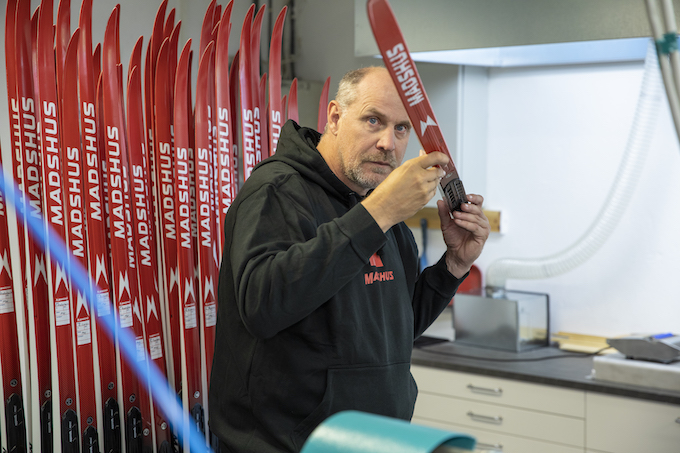Meet Håkan Nordbäck, head of the Madshus grinding department.
While the geometry, flex, camber and materials that make up the construction of the ski are the most important factors determining the glide and properties of ski, grinds and structures contribute significantly to enhancing the speed of the ski, along with glide wax and topping products.
Now that both the International Ski Federation (FIS) and the International Biathlon Union (IBU) are banning all fluorocarbon-based ski wax and toppings starting with the 2021-22 season, grinds and structures will be even more important.
At Madshus, we have a dedicated staff in charge of our grinding services right in the factory. This allows our grinders to work closely with the engineers and ski testers in order to develop and provide the fastest and most versatile grinds and structures.
Story continues below

What are grinds?
At the very basic level, grinds and structures are patterns etched into the ski base with the purpose of creating better glide in different snow conditions. The words grind and structure is often used interchangeably, and can refer to both machine grinds and manually applied structures, but there are distinct differences between the two.
A grind is a pattern ground into the base of the ski with a stone grinding machine, and is performed by a ski service shop (that hopefully has a lot of experience and expertise doing this). The stone grinder etches structure, a specific pattern, into the base of the ski that is designed to provide better glide in specific snow conditions. While a few years ago there were only a few of these machines in the whole country, grinding has become a business for a number of ski shops all over the country that are now offering grinding as service.
Manual structure is applied with a hand tool that either stamps or cuts a pattern into the base. This step is often done after all glide waxing, toppings and other grooming is finished. A stamped manual structure usually disappears after the next hot waxing, while a manual structure that is cut into the base can last longer.
Why grind your skis?
The short version: To speed up your skis.
In wet conditions there is too much water between the base and the snow, and the structure’s job is to drain the water away from the base and thereby reduce the suctioning effect. In these conditions, a coarse structure with a deep pattern will work best.
When it’s cold, there is not enough moisture between the base and the snow. In these conditions, a fine structure without deep groves will contribute to create a thin film of water between the base and the snow, which speeds up the ski.
We caught up with Håkan Nordbäck, head of the Madshus grinding department, to check out all about grinding.
Story continues below

What’s new in grinds this season?
“Well, for starters, we bought two brand-new grinding machines. That’s really exciting,” Nordbäck says.
In terms of different patterns and structures, the grinding staff is constantly working on and improving the grinds, based on the testing and feedback from both the World Cup skiers and the product developers.
“We are always looking for new patterns to try and ways to tweak the tried and trusted grinds to make them even better. But one difference this year, is that we are simplifying the grind menu,” he says.
So, for the 2020-21 season, there are three main grinds: a fine grind for temperatures below minus 6-7 degrees Celcius, a medium grind for temperatures between minus 6/7 C and 0, and a coarse grind for warmer conditions from freezing and above. These are called M61-f (cold), M61 (medium) and M63 (warm), respectively.
Is there a difference between the grinds for classic and skate skis?
“No. The grinds are the same. But how you apply them differs a bit. Given the same conditions and temperatures, you generally use a slightly coarser grind on classic skis than on skate skis. That’s because the snow acts a little different in the track and outside the track.”
How do you go about that process?
“Developing new grinds is a time-consuming process. We have to test them over time, in different conditions and at a high level, which is where we use the World Cup racers,” Nordbäck says, pointing out that the goal is to find patterns that perform well in a wide range of conditions and temperatures.
“Conditions often change over the course of a race, especially in long events such as the Birkebeiner and Vasaloppet. Changing temperatures and the number of skiers using the course changes the snow structure. The same is true if parts of the course are exposed to sun while others are in the shade, or if it the weather changes between dry and precipitating,” Nordbäck explains.
Finally, the grinds also need to be possible to reproduce with consistent results, and should be fairly durable, so that they can be used for a long time without losing their properties before the ski needs to be reground.

Inge Scheve
Inge is FasterSkier's international reporter, born and bred in Norway. A cross-country ski racer and mountain runner, she also dabbles on two wheels in the offseason. If it's steep and long, she loves it. Follow her on Twitter: @IngeScheve.




